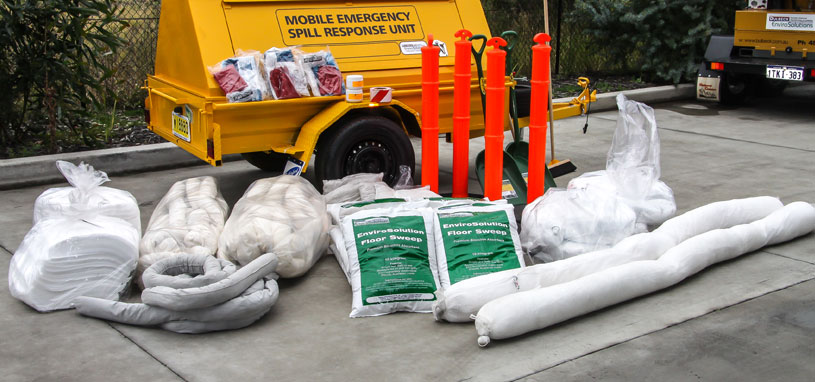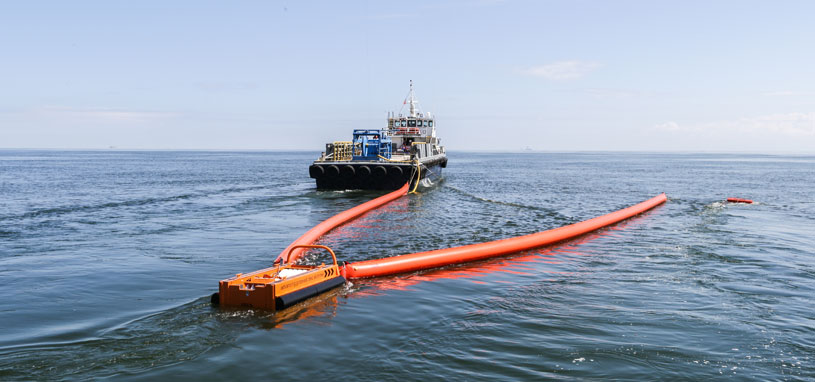Be prepared to clean up a hydrocarbon spill quickly and effectively
Hydrocarbon spills happen even with the most stringent preventive measures in place. It is impossible to eliminate them altogether. But, the longer spills remain on the ground or water surfaces, the more long-term damage happens to the environment. Researchers have found ongoing effects of oil pollution in areas of major spill incidents decades after the original spill.
A graduate student studied crabs in Buzzards Bay 36 years after a barge ran aground spilling its cargo of oil. She found that instead of drilling straight down when burrowing under the sand, these crabs went only a few inches before turning horizontal.
An oily layer below the surface was repelling their normal burrowing activity. The change of direction was preventing a tilling of the salt marsh leading to a lack of oxygen supply to the salt marsh grasses. The only way to prevent long term damage to the environment when a hydrocarbon spill occurs is to clean it up as quickly as possible.
Hydrocarbon spill sources
Hydrocarbon spills can occur anywhere that oil is being stored, transported, or transferred from one tank to another. These activities cover land and water sources, large scale industries and small businesses.
In January 2017, a heavy fuel oil spilled from a burst pipe at an energy depot. The spill polluted land and water as it made its way into the Sydney harbour. In another incident, just a few months later, a diesel spill caused a lane closure on the Pacific Highway in New South Wales. Sorbent material was used to clean up the diesel spill from a petrol station.
But, many spills can be cleaned up inside a company's premises before they reach the environment. Cleaning up land and water spills quickly and effectively is an important part of protecting the environment from more serious harm.
Cleaning up land spills
Land surface plays a significant role in how to clean a spill. Hardened or sealed surfaces are much easier to clean because the oil does not penetrate the ground.
After stopping the source of the spill, contain the oil in a defined area. Spill kits contain absorbent socks and booms for this purpose. Lay them out around the edge of a spill to prevent it from spreading further.
Absorbent materials absorb oil so that it can be collected and disposed of. They come in the form of pillows, pads or floorsweep. Each spill kit has the most appropriate absorbent material for the risks in the area.
The final step in cleaning up land spills is remediation of soil. Remove a top layer of soil if the contamination is severe. Tilling the earth and applying hydrocarbon-eating bacteria is a common method to eliminate the long-term effects of pollution.

Cleaning up water spills
Quickly containing oil spills on water is essential because of the rapid spread of hydrocarbons on a water surface. A small spill can contaminate a large area, damaging the ecosystems of the area.
Deploy oil containment booms from shore or from a spill response vessel in the ocean. By locating these booms strategically, taking wind and currents into account, the oil should be completely contained in a defined area. Clean-up crews have the opportunity to then remove the oil from the water without fear of it spreading further.
Use skimmers to clean oil spills on water. Different types of skimmer are available for different water conditions - including near shore or open waters. Suction skimmers operate in shallow water for small spills, while self-launching skimmers can recover up to 2,500 litres of oil per minute. In extreme cases, use fire booms to contain oil while it is burnt from the surface.

Training for spill clean up
SpillPro offers spill kits training and certification to help companies prepare to manage spills that occur on their premises. Our training centres around a 7-step process to clean spills:
- Assess the spill and determine whether you can handle the situation alone.
- Contain the spill by surrounding it with booms.
- Put on the relevant PPE.
- Absorb the spill using absorbent material.
- Dispose of waste absorbent into disposable bags.
- Report all spills to your supervisor or manager.
- Restock your spill kit to prepare for future spill incidents.
Contact SpillPro for more information about products and services for cleaning oil spills
SpillPro has extensive experience in supplying products and services for cleaning oil spills. We also train employees to respond to spills and certify their competence.
Find out more here, or call our expert team on 1800 368 450 today.
Must Read
SpillPro on 24 February 2025
Why Spill Readiness Matters
A spill isn't just an inconvenience. If not handled properly, it can lead to safety hazards, environmental damage, and compliance issues. By equipping your site with the right spill response solutions ...
Read moreSpillPro on 30 October 2024
Choosing the Right Containment Boom
Containment booms are the first line of defence in any spill response plan. When a spill occurs, swift and effective containment is crucial to minimise environmental impact and financial loss. Selecti ...
Read more